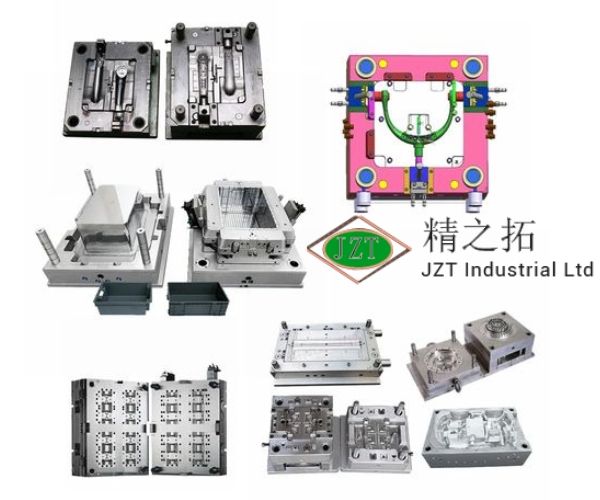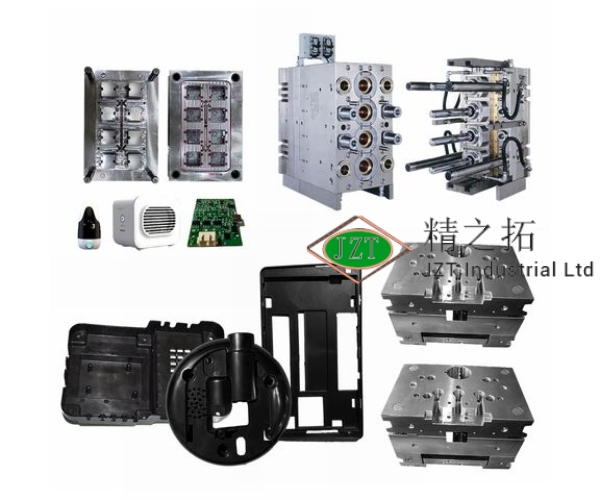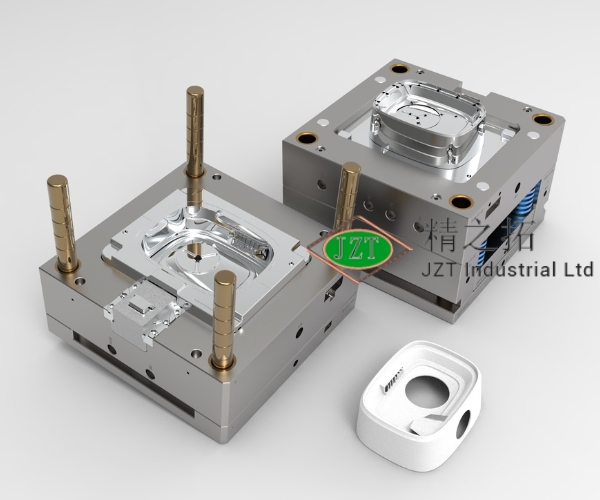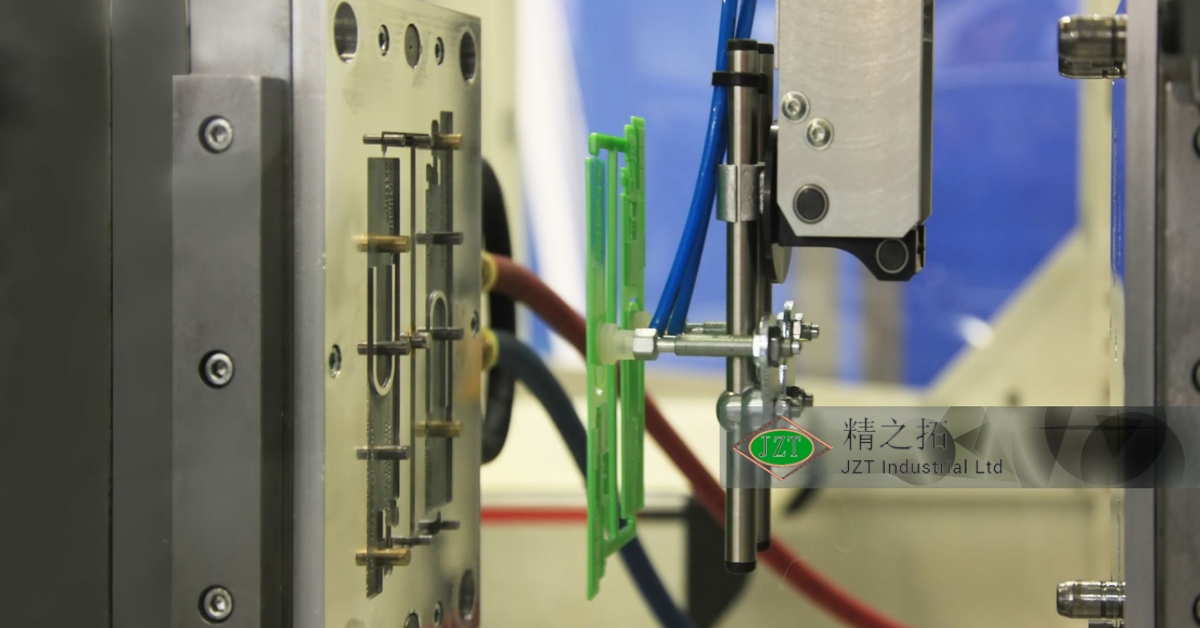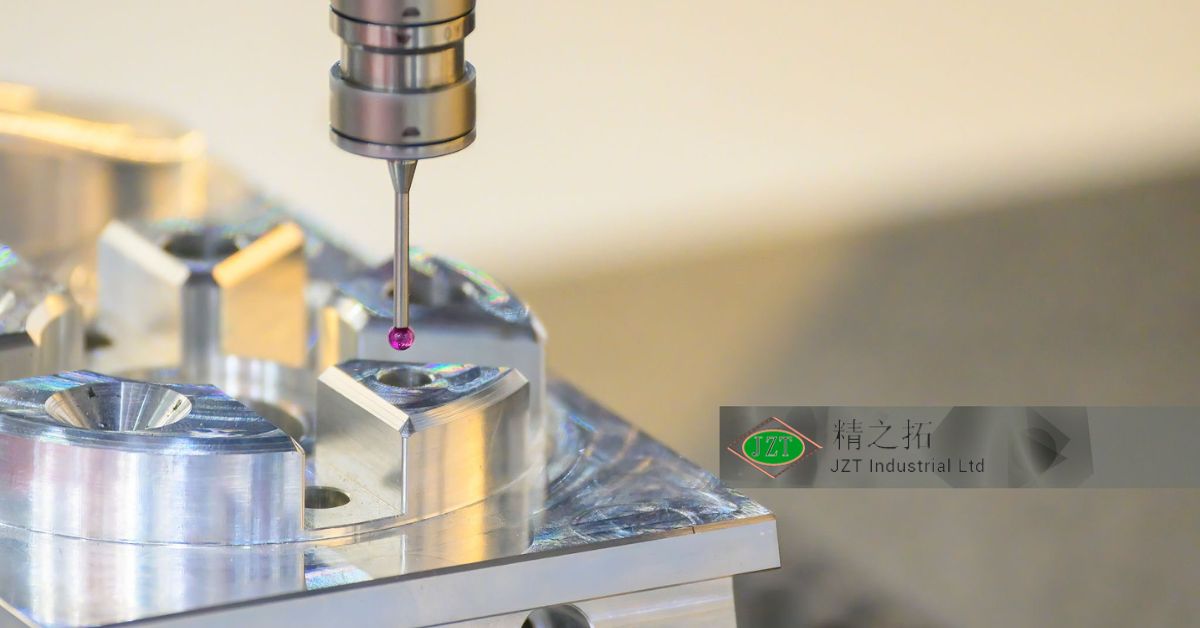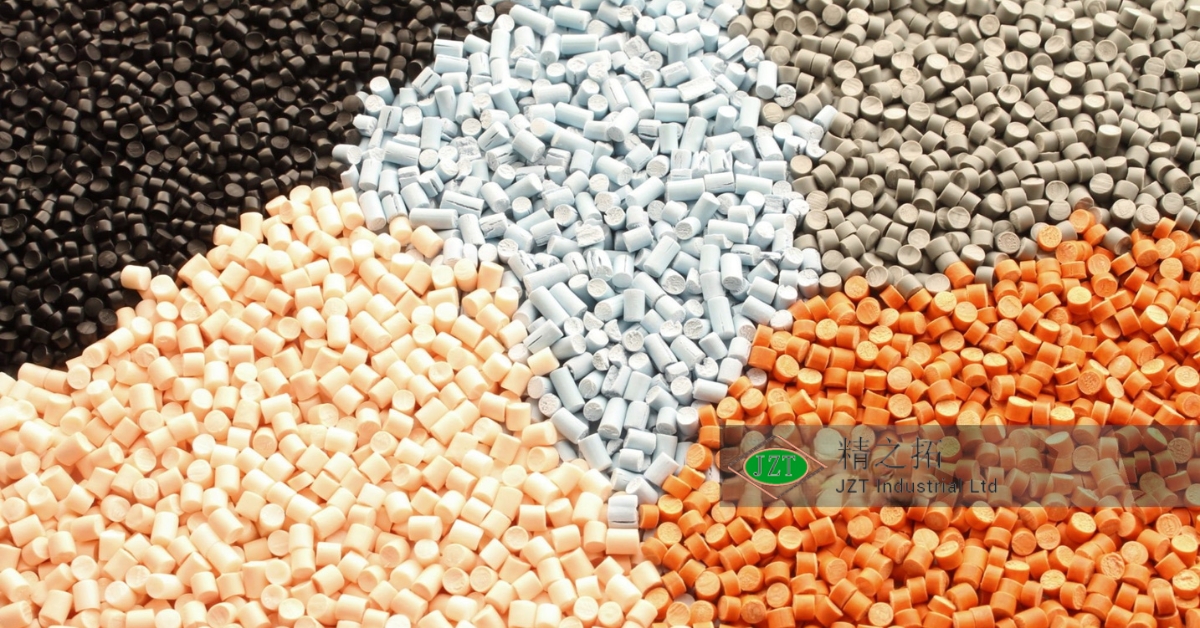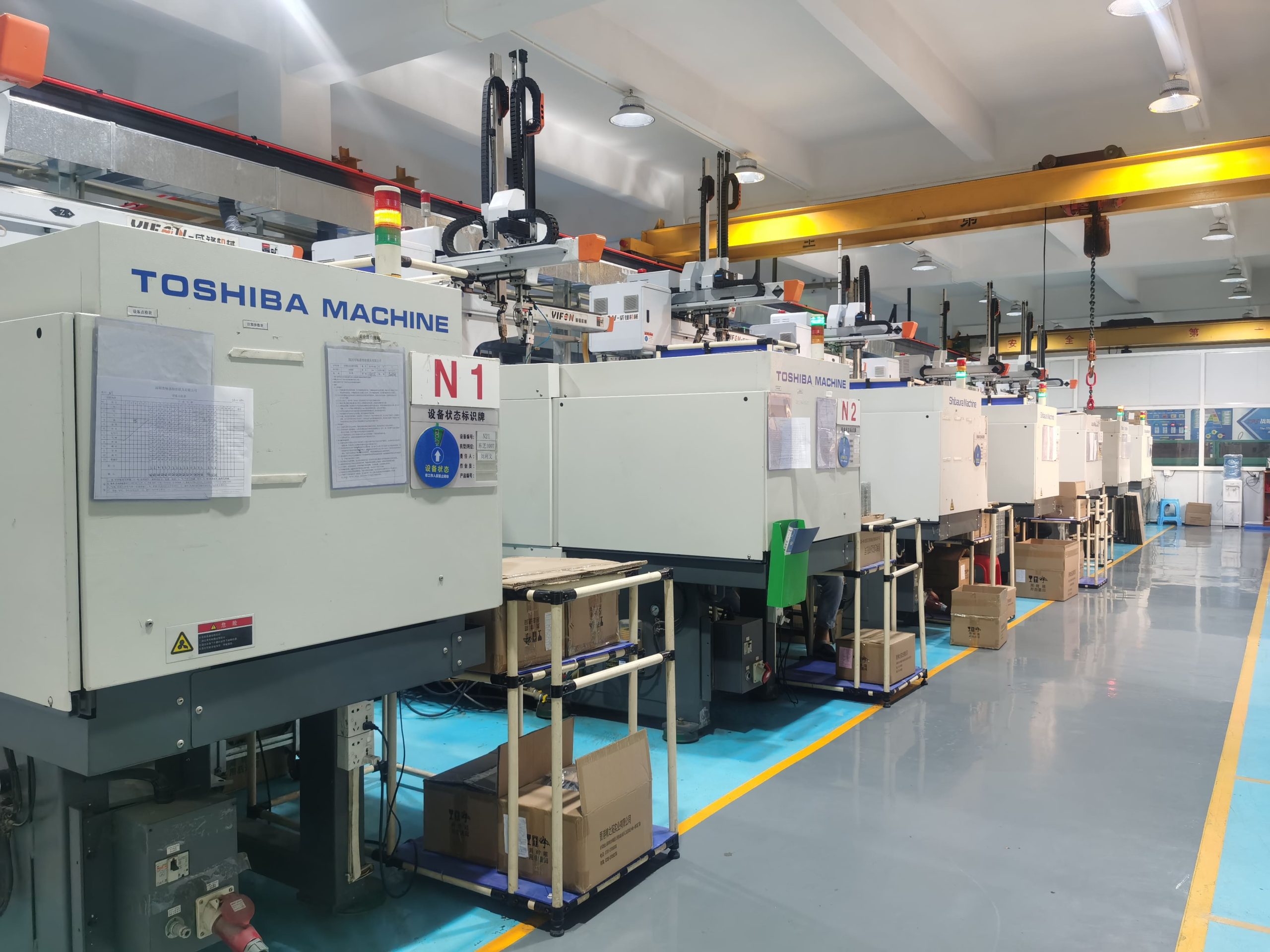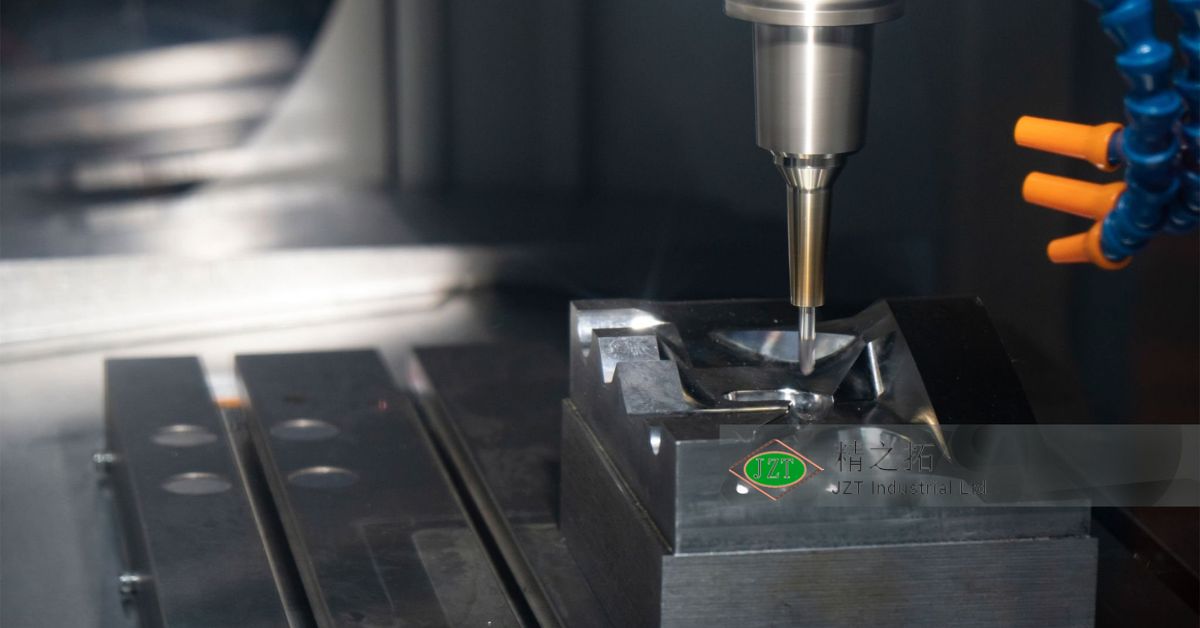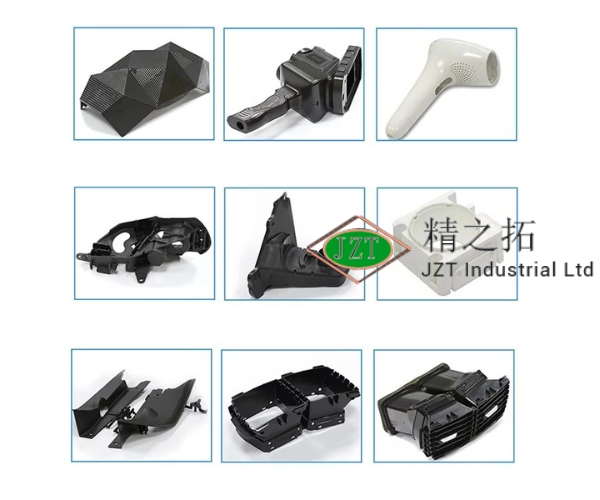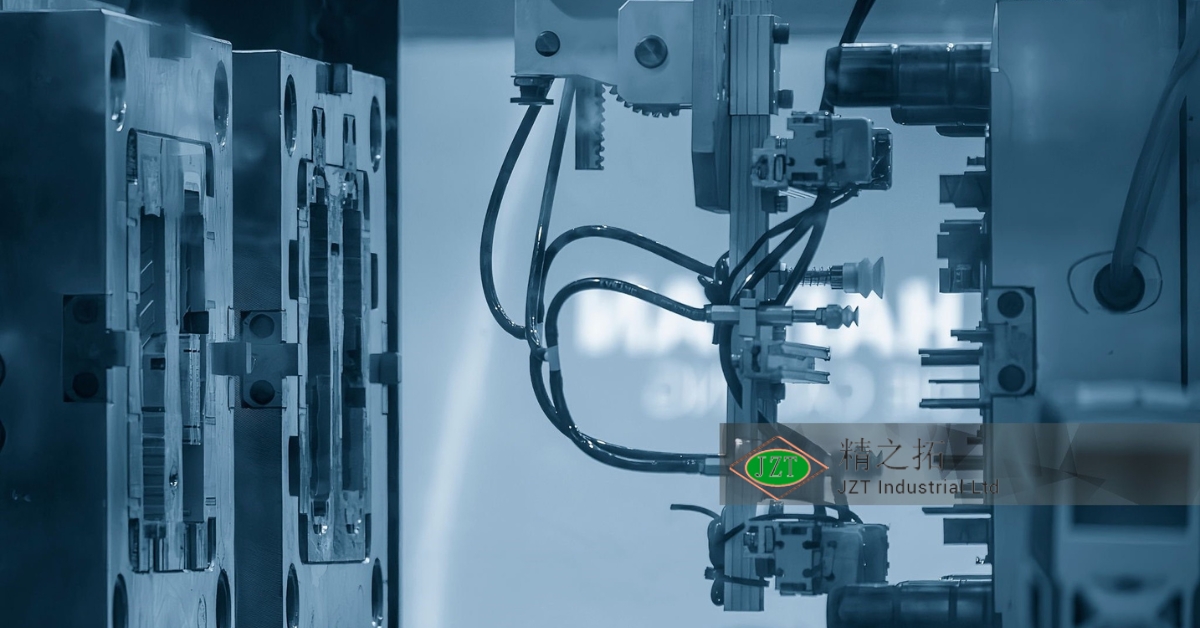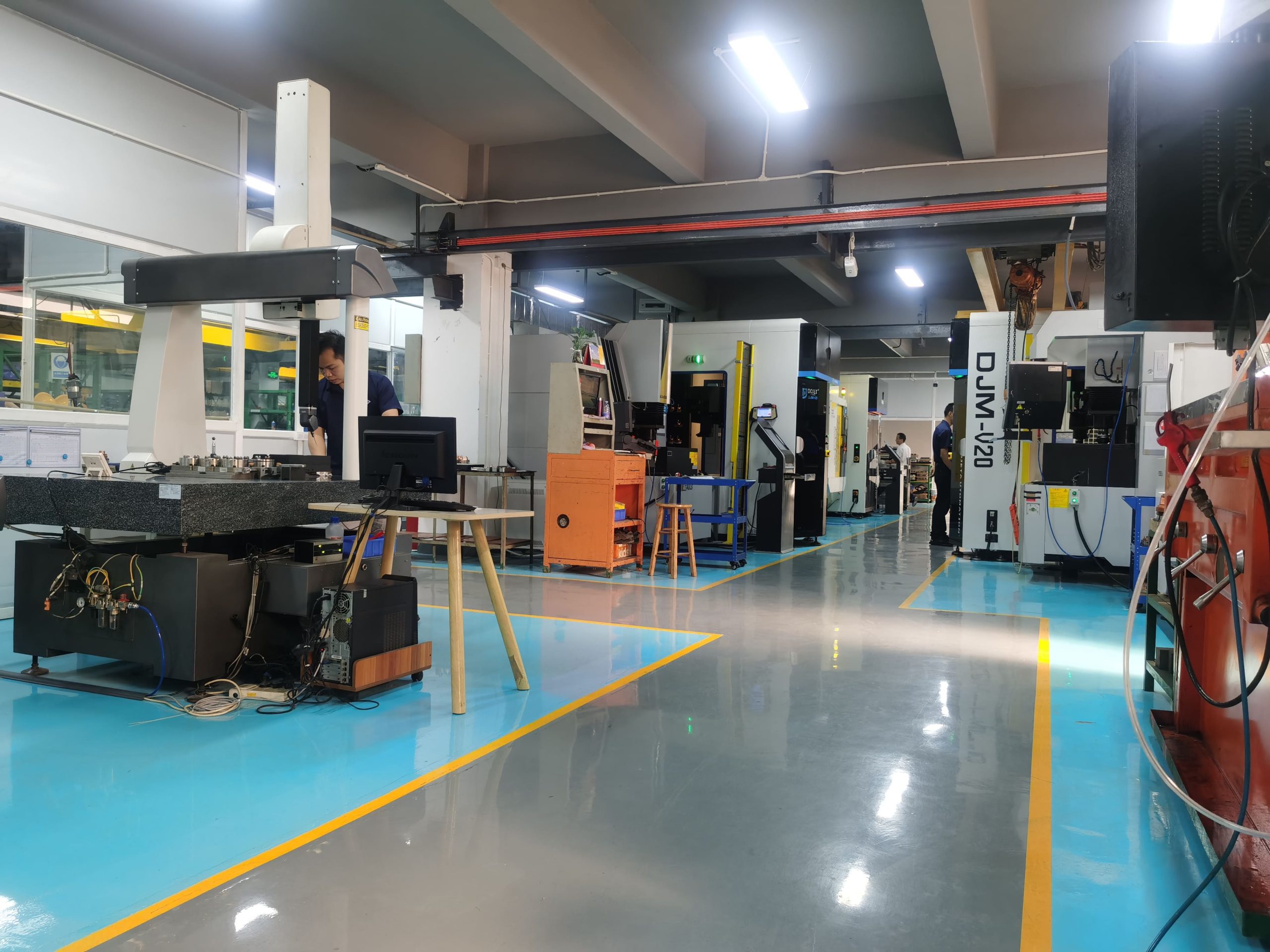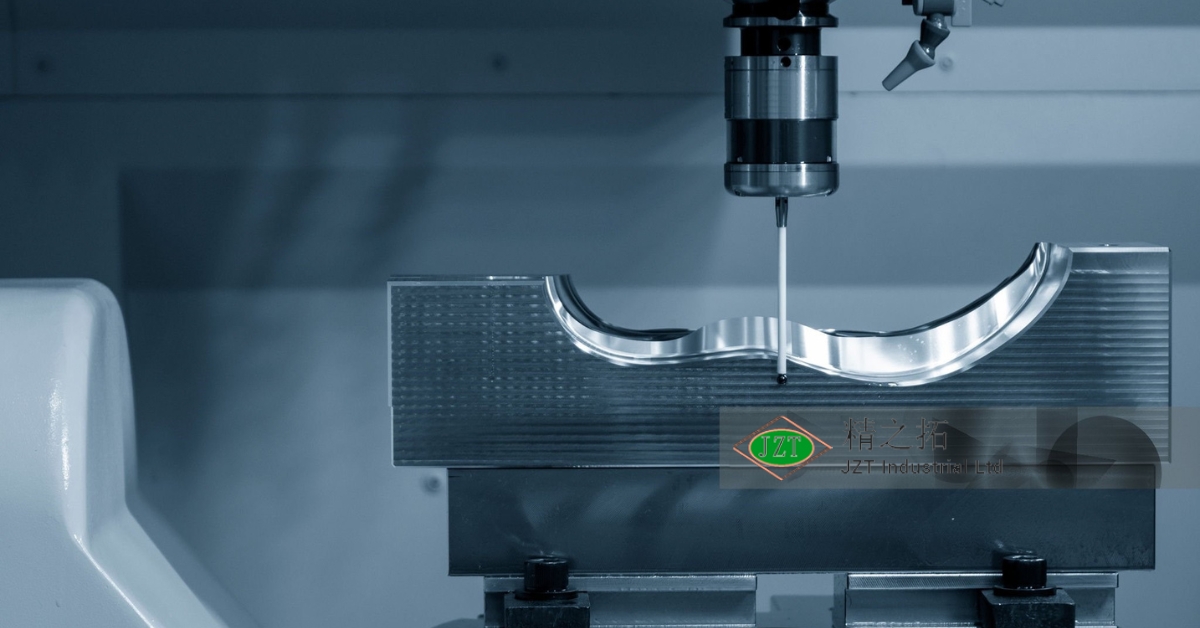소개
A key factor in modern manufacturing is the ability to consistently produce high-quality products at scale, which is why 플라스틱 사출 성형 has become a cornerstone of mass production in various industries. Among the numerous materials used in this process, ABS(아크릴로니트릴부타디엔스티렌) stands out due to its versatility, toughness, and thermal stability. For manufacturers in industries such as automotive, electronics, and consumer goods, ABS plays a vital role in creating durable and aesthetically appealing products. However, to achieve consistent quality, 플라스틱 부품 제조업체 must continuously focus on improving the ABS molding process.
ABS material’s unique properties make it an ideal candidate for producing a wide variety of components, from structural parts to products requiring a glossy, smooth finish. Its resistance to impact, heat, and chemicals means that it is favored in the production of parts that require both mechanical strength and dimensional stability. But while ABS is a reliable material, its performance during the injection molding process can be affected by several variables, such as processing conditions, material preparation, and mold design. Without careful optimization, these variables can lead to defects, inconsistencies, and inefficiencies in production.
This guide will explore practical and easy-to-follow improvements in the ABS injection molding process to help 플라스틱 부품 제조업체 achieve consistent quality in their products. We will dive into the most common challenges encountered with ABS, how to prepare the material properly, and the best practices in optimizing the injection molding process. Additionally, we will examine advanced methods like incorporating additives and improving mold design to further enhance product performance.
Let’s begin by discussing the typical issues encountered when molding ABS and how understanding these problems can lead to better outcomes in production.
Common Issues with ABS Injection Molding
What Are the Typical Defects Found in ABS Molded Products?
When working with ABS plastic injection molds, it’s common to encounter several types of defects that can affect the final product’s quality. These defects can range from minor cosmetic issues to more significant problems that compromise the part’s functionality or durability. One of the most prevalent defects in ABS injection molding is 싱크 마크. These occur when the material cools and contracts unevenly, causing depressions or indentations on the surface of the part. Sink marks are not only visually unappealing but can also indicate internal voids or weaknesses in the material, leading to compromised strength.
Another common issue is 워핑, which happens when different areas of the molded part cool at different rates. Warping distorts the part’s shape, making it unusable in applications requiring precise dimensions. Warping often results from uneven cooling rates or inconsistent material flow within the mold. In industries like automotive and electronics, where precision is critical, warped parts are typically rejected, resulting in wasted materials and higher production costs.
Inconsistent surface finishes 그리고 color variation are also frequent problems, especially in consumer products where aesthetics are important. These issues can arise from improper mold design, incorrect temperature settings, or contamination in the material. Variations in the surface finish, such as gloss levels or rough textures, can give the final product an unprofessional appearance, leading to customer dissatisfaction.
Lastly, dimensional inaccuracies 그리고 수축 can occur when the material doesn’t fill the mold properly or when the cooling process isn’t optimized. These problems can lead to parts that don’t fit or function as intended, particularly in high-precision applications like electronics housings or automotive components. For 플라스틱 부품 제조업체, controlling these defects is essential to ensure consistent product quality and reduce waste.
What Causes These Defects?
Understanding the root causes of these defects is critical for preventing them during the molding process. In many cases, the issues arise from improper material preparation or processing conditions. For example, ABS is hygroscopic, meaning it absorbs moisture from the environment. If ABS is not dried properly before being used in injection molding, the moisture in the material can vaporize during the molding process, creating bubbles or voids in the part. These voids can weaken the material, leading to sink marks or warping.
Another common cause of defects is improper temperature control. ABS has a specific melting temperature range, and if the material is not heated to the correct temperature, it may not flow smoothly into the mold cavity. This can result in incomplete filling, leading to voids or dimensional inaccuracies. Similarly, if the mold itself is not maintained at the appropriate temperature, it can cause the material to cool too quickly, leading to warping or other surface defects.
Inadequate pressure settings during injection can also lead to issues such as incomplete part filling or weak weld lines, where two material flow fronts meet and fail to fuse properly. This is particularly important in parts with complex geometries, where maintaining consistent pressure throughout the mold is crucial for ensuring uniform material flow. Addressing these causes through proper material handling, temperature control, and pressure adjustments can significantly reduce defects and improve the quality of ABS molded products.
Material Preparation: How to Prepare ABS for Injection Molding
The Importance of Pre-drying ABS
One of the most critical steps in preparing ABS for 플라스틱 사출 성형 is ensuring that the material is properly dried before it enters the molding process. As mentioned earlier, ABS is hygroscopic, meaning it absorbs moisture from its environment. If ABS contains too much moisture when it’s molded, it can lead to a range of defects, such as bubbles, surface imperfections, and weakened material properties.
그만큼 pre-drying process involves heating the ABS material to a specific temperature to evaporate any absorbed moisture before it is melted in the injection molding machine. Most manufacturers recommend drying ABS at around 80°C (176°F) for two to four hours, depending on the material’s moisture content and the ambient humidity levels. The drying process is crucial not only for preventing moisture-related defects but also for ensuring that the material flows smoothly and consistently during molding.
Proper drying also helps maintain the mechanical properties of ABS, such as its impact resistance and tensile strength. Moisture in the material can reduce these properties, leading to parts that are more prone to cracking or breaking under stress. By consistently pre-drying ABS before molding, 플라스틱 부품 제조업체 can achieve better part quality and reduce the risk of defects that result from moisture contamination.
How to Ensure the Right ABS Grade for Your Application
Another important aspect of material preparation is choosing the right ABS grade for your specific application. ABS is available in various grades, each with its unique properties tailored for different uses. For example, general-purpose ABS is widely used for producing plastic parts that don’t require extreme durability or specialized properties, such as toys or basic consumer products. However, for applications that require increased toughness or resistance to high temperatures, manufacturers may opt for impact-modified 또는 heat-resistant ABS grades.
In more specialized applications, such as in the automotive or electronics industries, flame-retardant ABS 또는 UV-stabilized ABS may be necessary to meet safety standards or environmental exposure requirements. 플라스틱 부품 제조업체 should carefully consider the operating environment and performance requirements of the final product when selecting the appropriate ABS grade. Choosing the right grade not only improves the performance and longevity of the product but also reduces the likelihood of defects or failures during use.
Proper material selection and preparation are fundamental to producing consistent, high-quality ABS parts. By ensuring that the material is free from moisture and selecting the appropriate grade for the application, manufacturers can significantly reduce the risk of defects and improve overall production efficiency.
Optimizing the Injection Molding Process for ABS
Ideal Processing Conditions for ABS
To achieve high-quality results in 플라스틱 사출 성형, it’s essential to optimize the processing conditions for ABS. The processing temperature, injection pressure, and cooling rates all play a significant role in determining the final product’s quality, and minor variations in these parameters can lead to significant defects.
ABS typically requires a processing temperature between 220°C and 260°C (428°F to 500°F), depending on the specific grade being used. Maintaining a consistent melt temperature is crucial to ensure that the material flows smoothly into the mold cavity. If the temperature is too low, the material may not flow adequately, leading to incomplete filling or the formation of weak weld lines. On the other hand, if the temperature is too high, the material may degrade, resulting in surface imperfections or weakened mechanical properties.
그만큼 분사 압력 must also be carefully controlled. Too little pressure may result in voids or poor material packing, while too much pressure can cause flash or distort the part as it cools. Achieving the right balance between temperature and pressure ensures that the mold is filled properly and that the material flows evenly throughout the mold cavity.
Finally, 금형 온도 is another important factor. ABS parts can warp or shrink if the mold temperature is not properly regulated. The recommended mold temperature for ABS is generally between 50°C and 70°C (122°F to 158°F). Proper cooling allows the part to solidify uniformly, preventing issues like warping, cracking, or surface defects.
Optimizing Injection Speed and Pressure
그만큼 injection speed is another critical factor in ensuring high-quality ABS parts. If the injection speed is too slow, the material may begin to solidify before the mold is completely filled, leading to incomplete parts or cold welds. Cold welds occur when two flow fronts meet but do not fuse properly, resulting in weak points in the final product. Conversely, if the injection speed is too fast, the material can become turbulent as it enters the mold, leading to defects like flow lines, which can weaken the part and create visual imperfections.
플라스틱 부품 제조업체 must strike a balance when setting the injection speed. For ABS, it’s typically recommended to use a medium to fast injection speed, as this helps ensure proper material flow and reduces the likelihood of voids or incomplete filling. However, it’s essential to avoid excessive speeds that could lead to overheating or turbulence within the mold cavity.
In addition to controlling speed, manufacturers must carefully adjust the 분사 압력. The pressure used during the injection phase ensures that the molten ABS material is properly packed into the mold cavity, which is crucial for maintaining dimensional accuracy and preventing voids or sink marks. After the material is injected, the pressure is held for a certain period (known as holding pressure) to compensate for any material shrinkage that occurs as the part cools. Optimizing the holding pressure helps reduce internal stresses and improves the overall strength of the part.
Improving Cooling Time and Efficiency
The cooling phase is a critical part of the 플라스틱 부품 성형 process, as it directly impacts the dimensional accuracy and surface finish of the final product. ABS has a relatively high shrinkage rate compared to other thermoplastics, so careful control of cooling time is necessary to prevent defects like warping, sink marks, or uneven shrinkage.
Cooling time can represent a significant portion of the total cycle time in injection molding, so reducing cooling time without compromising quality is essential for improving productivity. One way to achieve this is by optimizing the cooling system design within the mold. By incorporating features like conformal cooling channels that follow the contours of the mold cavity, manufacturers can ensure more uniform cooling, reducing the likelihood of warping and shortening overall cooling time.
In addition to cooling system design, 플라스틱 부품 제조업체 can use advanced temperature monitoring and control systems to adjust cooling times based on real-time data. These systems help optimize cooling efficiency, ensuring that parts are solidified quickly and uniformly without introducing stresses that could lead to defects. By improving the cooling process, manufacturers can enhance part quality while also reducing cycle times, leading to increased production efficiency and cost savings.
Mold Design Improvements for Consistent Quality
Gate Design and Location
One of the most significant factors in achieving consistent quality in 플라스틱 사출 금형 is the design and location of the gate—the point where molten ABS enters the mold cavity. The gate design directly impacts how material flows into the cavity, affecting the final part’s integrity and appearance. An improperly designed gate can cause several issues, including flow lines, weld lines, or incomplete fills. Therefore, optimizing the size, shape, and location of the gate is crucial for improving part quality.
The size of the gate affects how fast the material enters the mold. A gate that is too small can restrict the flow of ABS, leading to incomplete filling or weld lines where two flow fronts meet and fail to fuse properly. On the other hand, a gate that is too large can cause excessive material to flow into the mold too quickly, resulting in flash (thin excess material along the parting line of the mold) or other surface defects. The gate size must be carefully optimized based on the part geometry, material properties, and desired cycle time.
Location is equally critical. Gates should be placed in areas where material flow will be uniform and balanced, ensuring that all sections of the part are filled evenly. Poor gate placement can lead to uneven material distribution, resulting in internal stresses, warping, or weak points in the finished product. By strategically positioning the gate in an area that supports optimal flow, 플라스틱 부품 제조업체 can significantly reduce the occurrence of defects such as sink marks and improve the overall quality of the part.
For parts with complex geometries or large surface areas, using multiple gates or a hot runner system (which keeps the material hot as it flows to the mold cavity) can help ensure that the material fills the mold evenly, reducing the risk of flow-related defects. A well-designed gate system also minimizes material waste and improves production efficiency by ensuring that each part is properly formed without unnecessary trimming or post-processing.
Ventilation in the Mold
Proper ventilation is another critical aspect of mold design, as it ensures that air trapped within the mold cavity can escape during the injection process. If air is not adequately vented, it can become compressed, leading to defects like burn marks or bubbles, which affect both the appearance and structural integrity of the part. Additionally, trapped air can disrupt material flow, resulting in incomplete filling or voids within the part.
Mold vents are typically small channels or holes located at strategic points in the mold to allow air to escape as the ABS material fills the cavity. However, these vents must be carefully designed—too large, and they can allow material to escape (causing flash); too small, and they may not effectively remove the trapped air. The design of these vents should strike a balance between proper air evacuation and preventing excess material from flowing out.
In highly complex molds with intricate geometries, additional venting may be required to ensure that air can escape from every section of the mold cavity. The placement of these vents should be in areas where air is most likely to be trapped, such as the farthest points from the gate or at high points in the mold. Proper venting not only reduces the likelihood of air-related defects but also improves the overall efficiency of the molding process by ensuring that each part is fully formed with minimal rework required.
Parting Line and Ejector System Design
그만큼 이별선 is where the two halves of the mold meet, and any imperfections in the design or alignment of this line can result in visible defects on the surface of the part. For high-precision applications, such as in the automotive or electronics industries, a clean, precise parting line is essential to avoid flash or other cosmetic issues that could impact the appearance or function of the final product. Ensuring proper alignment and minimizing gaps at the parting line during mold closure is critical for producing parts with a high-quality finish.
그만큼 ejector system is responsible for removing the molded part from the cavity once the material has solidified. If the ejector system is not properly designed, it can cause damage to the part as it is being ejected, such as leaving ejector marks or warping the part. To prevent these issues, ejector pins or plates should be placed in areas where they can remove the part evenly without applying excessive force to any one area. Additionally, using a balanced ejector system ensures that the part is released smoothly and without deformation.
For complex parts or parts with delicate features, advanced ejector systems like air-assisted or hydraulic ejectors may be used to provide a more controlled release. Proper ejector design not only protects the quality of the finished part but also helps reduce cycle times by ensuring that parts are ejected efficiently and without damage.
Using Additives and Modifiers to Improve ABS Properties
Glass-Fiber Reinforced ABS
In many applications, such as automotive and industrial components, 플라스틱 부품 제조업체 require materials with enhanced strength and rigidity. One way to improve the mechanical properties of ABS is by incorporating glass fibers into the material. Glass-fiber reinforced ABS offers significantly higher tensile strength and rigidity compared to standard ABS, making it suitable for parts that must withstand heavy loads or impact.
The addition of glass fibers also improves the material’s dimensional stability, reducing the likelihood of warping or shrinkage during cooling. However, there are trade-offs to consider—while glass fibers increase strength, they can also reduce the material’s flexibility, making it more prone to cracking under certain conditions. Additionally, parts made from glass-fiber reinforced ABS may have a rougher surface finish due to the fibers, so manufacturers may need to consider secondary finishing processes if a smooth, aesthetic surface is required.
플라스틱 부품 제조업체 must carefully evaluate the specific requirements of each application to determine whether glass-fiber reinforced ABS is the right choice. For parts that require high strength and rigidity, such as automotive under-the-hood components or structural parts, this material offers a significant performance advantage.
Flame Retardants and UV Stabilizers
For applications where safety and durability are top priorities, flame-retardant ABS is essential. This material is commonly used in electrical housings, appliances, and automotive parts that must meet strict fire safety standards. Flame-retardant additives work by reducing the material’s ability to ignite and slowing the spread of fire, making it suitable for applications where fire resistance is critical.
In outdoor applications, UV stabilizers are often added to ABS to prevent degradation caused by prolonged exposure to sunlight. Without these stabilizers, ABS can become brittle, discolor, or lose its impact resistance over time when exposed to UV radiation. By incorporating UV stabilizers, manufacturers can extend the lifespan of ABS parts used in outdoor environments, such as garden tools, outdoor furniture, or automotive exterior components.
Both flame-retardant and UV-stabilized ABS materials are essential for ensuring that plastic parts meet the required safety and durability standards in their respective applications. These additives not only improve the performance of the material but also help manufacturers comply with industry regulations and consumer safety expectations.
Impact Modifiers for Increased Toughness
In applications where parts are exposed to frequent impact or rough handling, impact modifiers can be added to ABS to increase its toughness. These modifiers improve the material’s ability to absorb and dissipate energy during an impact, reducing the likelihood of cracking or breaking. Impact-modified ABS is commonly used in applications such as automotive bumpers, helmets, and consumer electronics that must withstand repeated impacts without failure.
The use of impact modifiers allows 플라스틱 부품 제조업체 to create products that are both durable and lightweight, making them ideal for industries where both performance and weight are critical factors. However, as with other additives, the use of impact modifiers may affect the material’s processing conditions, so manufacturers must carefully balance the use of these additives to achieve the desired properties without compromising part quality.
Best Practices for Quality Control in ABS Injection Molding
In-Process Monitoring of Key Parameters
Achieving consistent quality in 플라스틱 부품 성형 requires continuous monitoring of key process parameters throughout the injection molding cycle. Real-time monitoring systems can track variables such as temperature, pressure, and cycle time, allowing manufacturers to detect and address potential issues before they result in defects. For example, if the material temperature fluctuates outside the optimal range, the system can automatically adjust the heating elements to bring the temperature back within the desired limits.
By incorporating real-time monitoring, 플라스틱 부품 제조업체 can ensure that each part is produced under consistent conditions, reducing the likelihood of defects such as warping, sink marks, or voids. Additionally, this proactive approach to quality control helps minimize waste and rework by identifying potential issues early in the process.
Dimensional Inspection and Tolerance Control
For high-precision applications, maintaining tight dimensional tolerances is critical to ensuring that each part fits and functions as intended. To achieve this level of accuracy, 플라스틱 부품 제조업체 often use advanced measurement tools such as 3D scanners 또는 Coordinate Measuring Machines (CMMs) to verify part dimensions against the design specifications. These tools provide detailed measurements of every feature of the part, allowing manufacturers to detect even the slightest deviations from the desired dimensions.
Regular dimensional inspections throughout the production run help ensure that any variations in the molding process are detected and corrected before they result in out-of-spec parts. This is particularly important for industries like aerospace, medical devices, and electronics, where even small deviations can have serious consequences for the performance of the final product.
Surface Finish and Color Consistency Checks
In addition to ensuring dimensional accuracy, maintaining consistent surface finishes and colors is essential for many consumer-facing products. Variations in surface finish can occur due to factors such as mold wear, material contamination, or improper processing conditions. By regularly inspecting the surface finish of molded parts, manufacturers can identify and address issues like rough textures, gloss variations, or flow lines before they affect the overall quality of the product.
Color consistency is another critical factor, particularly for products like consumer electronics or automotive interiors, where aesthetics play a significant role in customer satisfaction. Variations in color can occur due to inconsistent material batches, improper colorant mixing, or fluctuations in processing temperatures. By closely monitoring color consistency during production and using high-quality colorants, manufacturers can ensure that every part meets the required aesthetic standards.
Reducing Waste and Improving Efficiency in ABS Injection Molding
Recycling and Reusing ABS Material
Sustainability is an increasingly important consideration for 플라스틱 부품 제조업체, and one of the most effective ways to reduce waste is by recycling and reusing ABS material. ABS can be reground and reprocessed without significant loss of its mechanical properties, making it an ideal candidate for recycling. By incorporating regrind material into the production process, manufacturers can reduce raw material costs and minimize the amount of waste sent to landfills.
However, it’s essential to ensure that the regrind material is properly handled and processed to maintain consistent quality. Regrind should be mixed with virgin ABS material to achieve a balance between cost savings and part performance. Additionally, care must be taken to avoid contamination of the regrind material, as impurities can affect the final product’s strength, appearance, or durability.
Minimizing Scrap and Defects
Another way to reduce waste in ABS injection molding is by minimizing the amount of scrap generated during production. Defects such as incomplete fills, flash, or warping can lead to parts being rejected, resulting in higher scrap rates and increased material costs. By optimizing process parameters, improving mold design, and incorporating real-time monitoring systems, manufacturers can significantly reduce the occurrence of defects, leading to lower scrap rates and higher overall efficiency.
Energy-Efficient Injection Molding Processes
Energy efficiency is another critical factor in reducing the environmental impact and operational costs of 플라스틱 부품 성형. Modern injection molding machines equipped with servo motors and variable frequency drives (VFDs) use energy more efficiently by adjusting power consumption based on the specific needs of each cycle. These machines can significantly reduce energy consumption compared to older models, making them a valuable investment for manufacturers looking to improve sustainability.
Additionally, optimizing cooling systems and reducing cycle times can help lower energy usage without compromising part quality. By incorporating these energy-efficient practices, 플라스틱 부품 제조업체 can reduce their environmental footprint while also improving their bottom line.
Case Studies of Successful ABS Molding Material Improvements
사례 연구 1: 자동차 산업
A leading automotive parts supplier sought to improve the quality and durability of ABS plastic parts used in under-the-hood applications. By switching to glass-fiber reinforced ABS and optimizing the injection molding process, the supplier was able to produce parts with significantly higher strength and impact resistance. The improvements resulted in a 25% reduction in part failures during field testing, leading to higher customer satisfaction and reduced warranty claims.
Case Study 2: Consumer Electronics
A manufacturer of consumer electronics faced challenges with achieving consistent color and surface finishes on ABS housings for a new line of smartphones. After optimizing the mold design and implementing real-time color monitoring systems, the company achieved a 95% reduction in color variation defects. The improvements not only enhanced the product’s visual appeal but also reduced the amount of rework required, leading to faster production times and lower costs.
Case Study 3: Medical Devices
In the medical device industry, precision and reliability are paramount. A manufacturer of ABS components for medical diagnostic equipment implemented strict quality control measures, including real-time monitoring of process parameters and regular dimensional inspections. These improvements helped the company reduce defects by 30% and ensure that all parts met the stringent tolerance requirements needed for medical applications.
결론
Achieving consistent quality in ABS injection molding requires a combination of proper material preparation, optimized process parameters, and thoughtful mold design. By addressing common issues such as moisture absorption, improper temperature control, and inadequate mold ventilation, 플라스틱 부품 제조업체 can significantly reduce defects and improve product performance.
Incorporating additives like glass fibers, flame retardants, and impact modifiers can further enhance the material’s properties, making ABS suitable for a wide range of applications. Additionally, implementing advanced quality control measures, such as real-time monitoring and regular dimensional inspections, ensures that each part meets the required specifications.
By following these easy-to-follow improvements, manufacturers can achieve consistent, high-quality ABS parts that meet the demands of industries ranging from automotive and electronics to medical devices and consumer goods. The result is not only better product quality but also increased efficiency, reduced waste, and improved sustainability in the injection molding process.
Frequently Asked Questions (FAQ)
What is the most common defect in ABS injection molding, and how can it be prevented?
The most common defect is sink marks, which can be prevented by optimizing gate design, material flow, and cooling times to ensure uniform material distribution and shrinkage.
How does pre-drying ABS material affect the final product quality?
Pre-drying ABS eliminates moisture, which can otherwise cause bubbles, voids, and weakened material properties during the molding process, leading to defects like sink marks or warping.
Can additives like glass fibers or UV stabilizers impact the recyclability of ABS?
Yes, additives can affect the recyclability of ABS by changing its melting behavior and mechanical properties. However, proper sorting and processing can mitigate these issues.
What are the best practices for ensuring color consistency in high-volume ABS molding?
Regular monitoring of color consistency during production, using high-quality colorants, and optimizing mold design are key to achieving consistent color across production runs.
How can automation and real-time monitoring improve the quality of ABS injection molded parts?
Automation and real-time monitoring help control critical process parameters like temperature and pressure, reducing defects and ensuring each part meets the desired quality standards.

